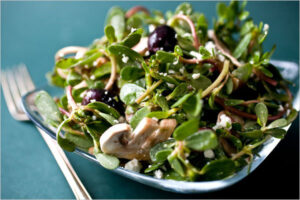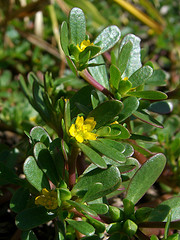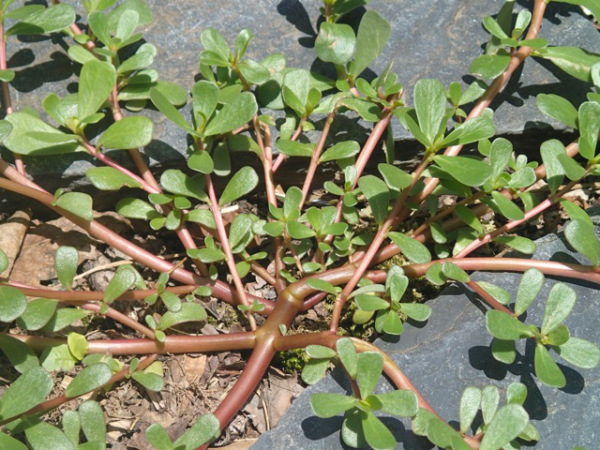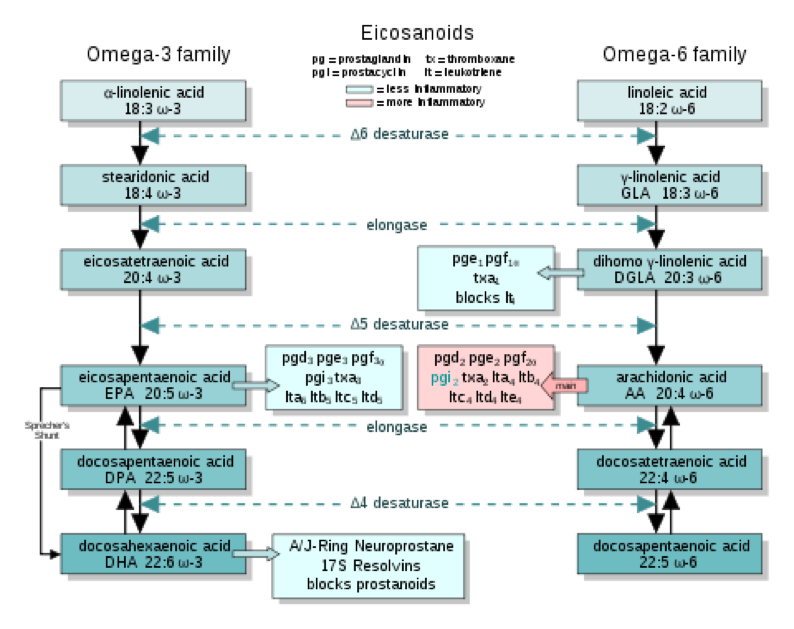Chances are, if you live in the city, you’ve seen this little plant growing in crevasses of sidewalks and roads. If you have a garden, you’ve likely pulled it, tossed it, lit it on fire, sprayed it with herbicide, chopped it with a shovel, or put it in the compost.

The thin line between pesky weeds and tasty salads
Purslane or Portulaca olearacea, is a one of the many SUPER healthy plants people refer to as a “weeds. Purslane is the plant kingdom’s omega-3 fatty acid powerhouse. “It’s a miracle plant,” said Dr. Artemis Simopoulos, president of the Center for Genetics, Nutrition and Health in Washington, who discovered while working at the National Institutes of Health that the plant had the highest level of Omega-3 fatty acids of any other green plant. It’s also surprisingly tasty for such a hearty heat tolerant crack dweller. Go ahead an make plans to harvest it for your salads, soups and snacks. It’s free food and leaves plain old lettuce and spinach in the dust! The leaves and succulent stalks are edible.
Omega-3 fatty acids? You mean those magical fats found in cold water fish like salmon and cod?
Yes and No. Purslane, contains a version of Omega-3, however, it comes in the form of Alpha Linoeic Acid. Many internet sources put plant based Omega-3’s in the same class as cold water fish Omega-3’s. Unfortunately, they’re wrong. Below Chris Kresser explains the different between plant-based ALA and the types of Omega-3 fatty acids found in Fish.
Fish contain a variety of fatty acids, but the ones that are believed to confer the majority of the benefits are the long-chain omega-3 fats eicosapentanaenoic acid (EPA) and docosahexaenoic acid (DHA). These omega-3 fats are found exclusively in seafood and marine algae.
As you can see from the chart below, it is also possible for the body to synthesize EPA and DHA from the short-chain omega-3 alpha-linolenic acid (ALA). ALA is also found in plant foods such as flax, hemp and pumpkin seeds and walnuts. However, research clearly indicates that the conversion of ALA to EPA and DHA is extremely limited. Less than 5% of ALA gets converted to EPA, and less than 0.5% (one-half of one percent) of ALA is converted to DHA. A common misconception, especially amongst vegetarians and vegans, is that our need for EPA and DHA can be met by consuming flax oil and other plant sources of ALA. But the conversion numbers above clearly indicate that this isn’t the case.
Studies have shown that ALA supplements (like flax oil) are unable to raise plasma DHA levels in vegans, despite low DHA levels at baseline. (ref) So unless they are supplementing with an algae-derived source of DHA, it is likely that most vegetarians and vegans are deficient.
Purslane Benefits Summed Up
The benefits of the Omega-3 (ALA) found in Purslane and other plants sources are not as well verified as the one’s found in fish. For vegetarians, who do not get the animal based EPA and DHA Omega-3’s, Purslane’s high amount of fatty acids could be beneficial. Some studies show that vegetarians can convert more ALA(dietary) into beneficial EPA but not DHA. Scientists are still studying the benefits of Alpha linoeic acid. Other studies show that ALA may be beneficial for long-term heart health and lower blood pressure. High dietary intake(not supplements) of alpha-linolenic acid over a period of 6 years seems to drop the risk of a first heart attack by as much as 59% in both men and women.

Besides the possible benefits of Omega-3’s, purslane is also an excellent source of Vitamin A (100 g provides 44% of RDA), vitamin C, and some B-complex vitamins like riboflavin, niacin, pyridoxine and carotenoids, as well as dietary minerals, such as iron, magnesium, calcium, potassium, and manganese. The best thing is………it’s free food and probably growing in your backyard right now.
So don’t pull those purslane plants out of your garden. Pick them and add them to your diet.
They’ll grow anywhere. I even cultivated a golden variety in our aquaponics system. It did great and made for some tasty green salads.
Purslane Seed Source $7 shipped on Amazon prime:
http://www.chicagotribune.com/dining/recipes/sns-food-recipes-sides-purslane-story.html
Dietary ALA sufficient to raise omega-3 levels, says study
Huge and informative Breakdown on Omega-3 Fatty Acids from Oregon State





GIPHY App Key not set. Please check settings